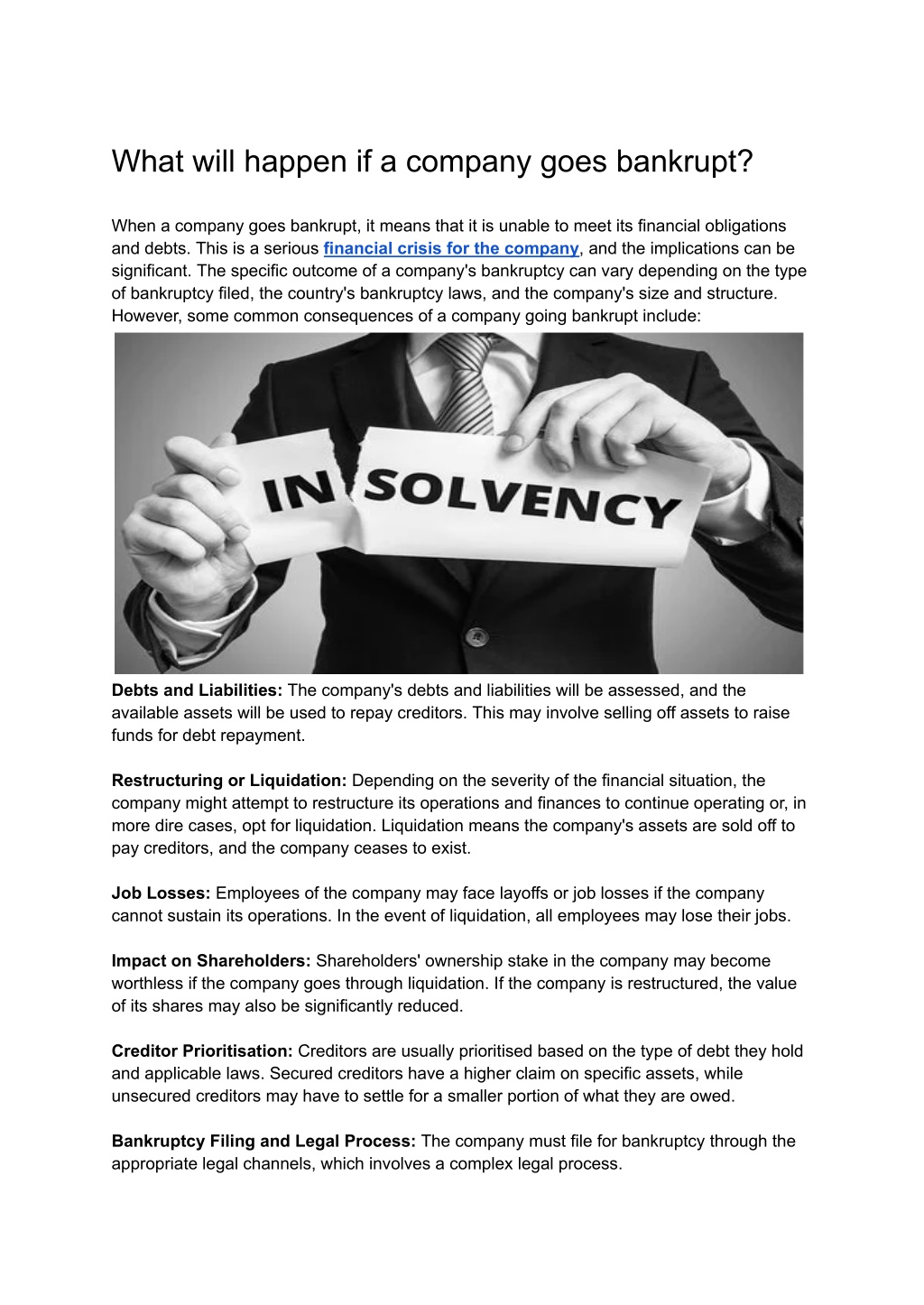Exploring the Effect of a Company Entering Into Management
When a business enters management, the repercussions waterfall beyond its immediate confines, sending out ripples through different balls. The sudden disruption to operations can cause a cause and effect influencing suppliers, workers, and consumers alike. The ramifications expand much past the operational realm, diving into the intricate web of financial entanglements and legal responsibilities that trap stakeholders. As we browse with the diverse landscape of a business facing administration, a much deeper understanding of its effects arises, dropping light on the complexities that unravel when the fate of a venture hangs in the equilibrium.
Immediate Effect On Workflow
When a company enters into administration, the immediate effect on its procedures can be considerable, impacting numerous elements of its functioning. One of the primary repercussions is the disturbance in day-to-day tasks. With uncertainty bordering the future of the company, employees may experience distress, leading to reduced performance and motivation. In addition, vendors and partners might end up being hesitant to involve with business, influencing the supply chain and potentially triggering hold-ups or scarcities in important sources.
Financially, the company may encounter restrictions on its investing and investment choices, as administrators take control to analyze the circumstance and determine the most effective course of activity. This can cause money circulation obstacles, making it difficult to meet obligations such as paying salaries or working out invoices quickly. Additionally, the track record of the organization might experience, as information of management spreads, possibly bring about a loss of client count on and loyalty.
Financial Ramifications for Stakeholders
The immediate functional challenges encountered by a company entering administration have significant economic ramifications for stakeholders entailed in the firm's affairs. On the other hand, customers might additionally be affected by an organization going into administration, facing interruptions in service, guarantee issues, or the loss of pre-paid solutions or deposits. These economic ramifications highlight the ripple effect that an organization entering management can have on different stakeholders, highlighting the relevance of aggressive risk monitoring and strategic preparation.
Lawful Responsibilities and Obligations
Navigating the detailed web of legal obligations and responsibilities is an important endeavor for all parties involved when an organization enters management. The managers designated to look after the process have a duty to act in the ideal interests of the financial institutions. They need to adhere to legal demands, such as preparing records on the business's economic circumstance and carrying out meetings with financial institutions to go over the administration process.
Employees also have legal rights that have to be promoted during administration. Relying on the circumstances, they may be entitled to redundancy pay, notice pay, and other advantages. It is essential for administrators to adhere to employment legislations and make sure that workers are dealt with fairly throughout the procedure.
Lenders play a considerable duty in administration also. They have the right to be informed concerning the firm's economic condition, participate in financial institutions' conferences, and ballot on essential choices. Administrators have to interact transparently check that with financial institutions and abide by legal methods to protect their rate of interests.
Prospective for Organization Restructuring
In the realm of organization management, exploring the potential for restructuring holds considerable promise for renewing a struggling business. When an organization deals with monetary distress or operational obstacles, reorganizing supplies a calculated technique to resolve underlying concerns and place the business for future success. By reassessing the organizational framework, operational processes, and economic techniques, an organization can implement changes that enhance performance, minimize expenses, and enhance overall efficiency.

Furthermore, reorganizing gives a possibility to examine leadership functions, obligations, and decision-making processes to make sure effective administration and accountability. By carrying out a well-thought-out restructuring plan, a service can browse tough times and emerge stronger and more resilient in the open market why not find out more landscape.

Ramifications for Market and Market
Taking into consideration the more comprehensive effects for sector and market dynamics, it becomes obvious that a service going through restructuring can set off causal sequences that resound throughout the affordable landscape. When a business enters into administration, it can cause boosted competitors as other firms look for to fill up the void left by the battling business. This elevated competitors can result in rate battles, development drives, or mergers and purchases as companies scramble for market share.
Additionally, the collapse of an organization can likewise affect distributors and partners within the industry. Vendors may deal with payment delays or even defaults, impacting their own economic stability (what happens to employees when a company goes into liquidation). Collaborations that were reliant on the now-struggling business might require to be reevaluated or renegotiated, leading to more interruptions in the marketplace environment
Conclusion
Finally, the influence of an organization entering into administration is substantial, influencing procedures, financial resources, legal responsibilities, and potentially leading to restructuring. Stakeholders have to navigate the obstacles and uncertainties that emerge from this procedure, while the bigger sector and market may also really feel the effects. It is crucial for all events entailed to meticulously consider their following actions and prepare for the future in order to minimize potential losses and make sure the finest end result for all entailed.
When a company goes into administration, the prompt effect on its operations can be considerable, impacting different elements of its operating.The prompt functional obstacles encountered by an organization entering management have significant economic ramifications for stakeholders involved in the company's events. These monetary implications highlight the surge effect that a company going into management can have on different stakeholders, underscoring the relevance of positive danger management and critical planning.
When a firm goes into management, it can lead to boosted competitors as other firms seek to fill the void left by the battling company - what happens when a company goes into administration.In verdict, the impact of a company going into management is considerable, influencing operations, financial resources, lawful responsibilities, and potentially leading to restructuring